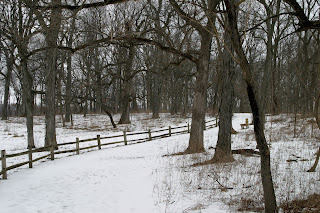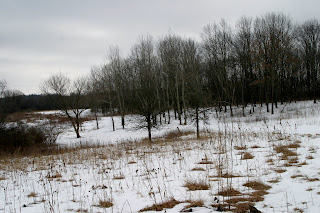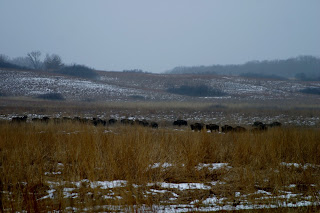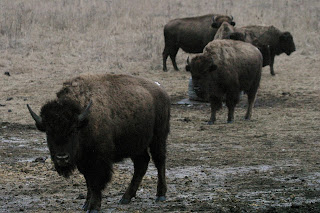The past few weeks have been pretty unforgiving in terms of letting me get out for a hike so today I'm reminiscing about my trip up to Arches National Park last January. Like so many of the coolest trips I did while I was in grad school, this was a spontaneous one. A friend from Denver called me and told me that they had an open spot on a ski trip in Breckenridge that weekend and since I was back in Arizona waiting for the semester to start I had no excuse not to make the drive. I had never snowboarded in Colorado so that was appealing in itself, but the trip would also give me an excuse to make my first trip to two iconic landscapes of the west: Monument Valley and Arches National Park.
Leaving Phoenix at dawn, I drove up I-17 into Flagstaff, passing the snow capped Kachina Peaks. Only a 2 hour and change drive from Phoenix, I had entered a different climate entirely and I began to see drifts of snow along the highway. As I headed northeast through Navajo Nation past Tuba City and into Kayenta, I began to see the silhouettes of the sandstone bluffs that define Monument Valley in the distance. Ask anyone to describe the quintessential scene of the west and they will without a doubt think of Monument Valley. Crossing into Utah I entered Monument Valley Navajo Tribal Park and stopped along highway 163 for some photos.



Determined to reach Arches National Park in time to hike out to
delicate arch for sunset I continued north through Mexican Hat, Utah,
named for a rock that vaguely resembles a man wearing a sombrero. I
pulled over to see Mexican Hat Rock and I felt a little sad for it
because had it been located somewhere in the midwest people would
probably seek it out as a hiking destination or geologic landmark.
However, being in Utah among some of the country's most impressive
geology, Mexican Hat Rock amounted to not much more than a mediocre heap
of rock. Poor Mexican Hat Rock.

I continued north and reached Moab in the late afternoon. Navigating my way through the main street of town, Highway 191, every building I passed seemed to cater to outdoorsmen. Rock climbing equipment, kayaks, mountain bikes, and camping gear seemed more easily accessible commodities than groceries. Moab is an interesting town. A small town with a population of only 5000 residents, the tourism industry brings over a million visitors each year. In American history Moab has been the home of indigenous people, the site of a trading fort, Japanese internment camp, and Uranium mining community. Once deemed "The Uranium Capitol of the World", by 1980 the mines had closed and the town became one of the top outdoors destinations in America.
A large reason for its attraction from tourists and outdoorsmen is the proximity to two beautiful National Parks: Arches (located just north of town across the Colorado River) and Canyonlands (located only 30 miles southwest). En Route to Breckenridge I would be camping for the night at Arches National Park in the Devil's Garden Campground. This would also be another first for me in that I had never winter camped before, but I had faith in my sleeping bag. After a quick stop at the visitor center I drove up the park's main road, climbing in elevation to some beautiful views of Moab below until I reached the plateau that holds the national park. To the southeast I could see the La Sal Mountains, coated in snow and providing a stark contrast to the red terrain in the foreground.
Arches National Park began as Arches National Monument, designated in 1929. It was changed to become Arches National Park in 1971. Although the park is relatively small compared to other sites in the NPS at approximately 120 square miles, what it lacks in size it makes up for in beautiful views and iconic rock formations. The park is home to over 2000 natural arches, formed over millions of years by erosion of its red sandstone deposits. While it's prohibited to climb on any of the natural arches, there is still some pretty awesome rock climbing and the hiking is excellent. Perhaps the most well known of the arches in the park is Delicate Arch, which is featured in the background of the Utah state license plate. It was here that I decided to start my first hike.
The hike out to Delicate arch is 3 miles round trip with approximately 500 ft. elevation gain. Beginning at the Wolfe Ranch Trailhead, the first quarter mile of the trail provides an opportunity to see some petroglyphs created by the Utes who once inhabited the area. The trail is extremely popular, and despite winter conditions I still saw 30-40 people along the hike to the arch. Summer months are even more crowded. After hiking along a well defined path the trail turned to slickrock marked by cairns. After a few close calls on the icy trail I arrived at the arch in time for sunset. The views of the arch with the La Sal Mountains in the background were absolutely incredible and in the light the arch glowed bright orange.




I made my way back across the slickrock in the last few minutes of sunlight and headed to the Devil's Garden Campground, a nice facility of 51 campsites. $25 a night gets you flush toilets, fire pits, and picnic benches. As the sun dropped below the horizon the temperature dropped below freezing and I opted to spend the night sprawled in the back of my car instead of in my tent. I had the entire campground to myself that night.

I woke up before sunrise feeling pretty warm (Sierra Designs Zissou sleeping bag is rated to 23 degrees, which happened to be the temperature outside) only to see that my breath had condensed on the inside of my windshield to create a thick layer of frost. This marked the first time I've ever had to use a windshield scraper on the inside of my car. After a quick breakfast of oatmeal and coffee I left my campsite and started my morning hike: The Devil's Garden Primitive Loop, a 7.2 mile loop with 350 ft. elevation gain that provides excellent up close views of dozens of the park's arches. Traveling in a clockwise direction, the first half mile or so of the trail was relatively flat with few arches.
After just under a mile of hiking I reached Landscape Arch. Spanning 290 feet across, Landscape Arch has the largest span of any arch in the park. I arrived at the arch just after sunrise which created another beautiful glow on the red rocks.
After passing Landscape Arch the trail began a steep elevation gain up to a fork for Partition Arch and Navajo Arch. The icy trail was pretty difficult to climb and at some points I wound up sliding back 50-100 feet, which was amusing and scary at the same time.
After passing Partition Arch and Navajo Arch I reached the high point of the trail, which provided some pretty stunning panoramic views of the park.
The next arch I approached was Double O Arch, which also marked the fork for a half mile trail that dead ended at the Dark Angel, a 150 ft. tall sandstone formation. I returned to the main trail and completed the latter half of the hike, which featured fewer arches but was still beautiful. After wandering through some canyons and back through the field where the trail began I arrived back at the trailhead and began my drive northeast to Colorado.
Along the way I stopped at several of the vista points: the fiery furnace, which can be hiked in the summer after obtaining a permit and proper training to avoid damaging the cryptobiotic soil; balanced rock; and petrified dunes, which were formed as pressure transformed ancient sand dunes into the present day sandstone hills that sit in the foreground of the La Sal Mountains.
After leaving the park I continued north until I reached I-70, which took me east into Colorado. I followed the Colorado River into the mountains, arriving in Breckenridge just in time for dinner and sharing a few beers with friends. We spent the next day on the mountain and the snowboarding was the best that I've ever experienced (as a boy from the midwest). Paired with the incredible views of the mountains I was extremely glad I decided to make the trip.
After spending the night in Denver on a friend's couch I made the long trek back to Phoenix, this time via I-25 through scenic New Mexico. The amazing views continued and I reached Phoenix late at night, amazed at how many incredible sights I had seen in only 4 short days.
The Hikes:
Delicate Arch Trail - 3 miles round trip, 500 ft. elevation gain
Devil's Garden/Primitive Loop - 7.2 miles round trip, 350 ft. elevation gain
For more info on Monument Valley Navajo Tribal Park, Arches National Park, or Breckenridge check out these links:
http://navajonationparks.org/htm/monumentvalley.htm
http://www.nps.gov/arch/index.htm
http://www.breckenridge.com/
Leave No Trace!

























































